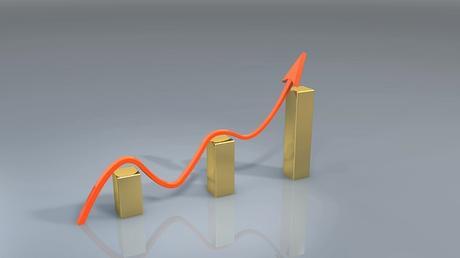

In marketing, K-factor is the formula by which we can calculate the growth rate of just about anything. Roughly, it goes:
...where k (K-Factor, or virality) equals the number of invites to a product, website, etc. ( i) sent by customers resulting in conversion ( c is the percentage rate of the invites' conversion).
Let's say you have a mechanism on your site where customers can invite friends to buy your products. Behind the scenes, you track each invite's source - e.g. [email protected] sent 5 e-mails to friends ( i) through your e-mail invitation widget. One invite recipient, [email protected] (visible in the ordering process or by a referral tracking code/URL), buys from your website. That's a 20% conversion rate, or c of .2. Your K-factor for that particular set of invites & purchases is 1.
You're pretty close to viral - congratulations! Officially, a K-factor over 1 indicates a viral hit.
Chances are you are tracking some of this information through your regular analytics and recurring measurements of various channels (if not, you should be!). You may have a good idea who your best customer is demographically speaking, or which online property (like a YouTube channel, blog or social media account) drives most traffic and conversions. K-factor just takes this information a step further.
So what happens if your K-factor is 1 or less? What if in the entire history of your invite-a-friend program you've only managed a K-factor of .2?
If the program doesn't cost you big bucks to run, it's probably worth keeping it around - because a K-factor of .2 still indicates growth, just not viral growth. But conversions are conversions, right? Also, K-factor isn't a one-time deal. Your new customers will continue to invite their friends, creating newer customers, who will continue to invite their friends, and so on. With a K-factor of 1 or less the results will taper off over time, but even a small K-factor can mean a long-term boost for your company.
However, if you're supporting an affiliate program with an ad spend through promoted tweets, sponsored Facebook posts and a smattering of SEM and your K-factor never gets above .2, you might consider easing off on the spending and trying a different approach. But if your K-factor hits an astounding 2 your growth will be phenomenal, so it would be worth the cost.
Maintaining a K-factor of over 1 means viral marketing will pretty much do all the work for you, making sales in perpetuity with little to no extra effort on your part. That's why viral marketing, although difficult to master, is such an attractive concept. Everyone loves good word-of-mouth, and viral marketing is word-of-mouth at its best.
In the real world, you may never see a K-factor of 2. You may never see a K-factor of .2. But that's OK, as long as you're tracking the numbers and know when to adjust your tactics. Marketing involves experimentation. Your best bet is to consider everything you'd think about when trying to drum up word-of-mouth:
- Is your product high quality?
- Is it easy to buy? Is your site user friendly?
- Is your customer service helpful?
- Do you offer lots of options for customers?
- Is it simple for customers to spread the word?
Because viral marketing depends on a customer's enthusiasm, loyalty and willingness to share your product with friends, you have to make sure you're providing a solid experience on all fronts. That's truly the best way to crack the K-factor code, because the better you are, the more your customers love you and convince friends to convert, who in turn fall in love with you and continue the cycle virtually ad infinitum.
